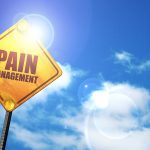Energy healing has been an inherent part of Eastern cultures for centuries, though the recent years have seen a widespread acceptance of the same also in Western medicine.
You have probably heard about negative energy that people often don’t want to be surrounded with. But have you ever wondered how that comes?
Energy is the pervasive force existing within and around the body. Wherever you are, there is an energy field that impacts how you feel.
This energy is the focus of most traditional eastern health practices and therapies as evident in the following three energy healing techniques.
Acupuncture
There are thousands of published scientific studies examining the efficacy of acupuncture for disorders ranging from back pain to post-traumatic stress disorder, and more. Multiple studies also get behind acupuncture as an effective remedy for symptoms of nausea and many types of pain.
Despite the vast scientific backing, acupuncture is an energy healing therapy developed in prescientific culture, as part of Traditional Chinese Medicine. It involves placing numerous fine needles through the skin in specific acupuncture points across the body to initiate healing and relief from specific symptoms.
The human body has well over 600 acupuncture points better known to acupuncture specialists. These points are directly connected to major organs and systems in the body through what is known as meridians.
The meridians are specific energy points connected with one another via vessels referred to as collaterals to form a kind of map. It is through this network of meridians and collaterals that qi (or life force energy) flows.
Evidence suggests that acupuncture works to promote the release of essential adrenal hormones including cortisol and ACTH that help with particular bodily pains and boost organ function.
Reflexology
This is an energy healing therapy of Chinese origin that focuses on balancing the flow of qi, or life energy, primarily targeting the feet, hands and ears.
Reflexology, which involves intense massage of the above-named parts of the body, targets specific locations on the feet and hands that are believed to have direct connections to different organs and body systems through the meridians.

Massaging these specific parts has the potential to initiate detoxification of the body and positively influencing overall health.
Through this targeted and often intense massage, reflexology effectively frees up blocked energy through muscle relaxation, stimulation and the improvement of lymph flow. With this energy healing therapy, you can achieve increased circulation, balance your energy, free your body of toxins and boost your immune system overall.
Chakra Healing
The other type of energy healing that has gained widespread popularity in the West is Chakra, the Indian ancient conception of our body’s primary energy centers.
The idea of Chakra is much similar in nature to the ancient Chinese conception of meridians. Just like meridians, chakras in our bodies are connected to major areas of nervous system and key endocrine glands throughout the body.
There is a total of seven Chakras in the body located in alignment from the base of our spine to the top of our head. At their optimum, these chakras work in synchronicity to allow for a steady flow of energy all over the body. Much like qi (in the first two types of energy healing), the energy in the chakras must be properly balanced to ensure optimum health and body function.
The same way they have the ability to open and allow for the inflow and outflow of energy, our chakras tend to close at the experience of negativity, anger and even sadness. The use meditation, breathing techniques and intention that eliminate negativity however help open up these chakras and restore the proper flow of positive energy.
Conclusion
As you can see from the three practices, energy healing simply revolves around balancing or clearing of your energy field. You can always influence this flow of energy through physical and mental awareness and intention to bring about beneficial, profound and replicable results.
Referenced Studies
Acupuncture in Modern Society.
Acupuncture for posttraumatic stress disorder: a randomized controlled pilot trial.
Efficacy of acupuncture in patients with chronic neck pain–a randomized, sham controlled trial.





